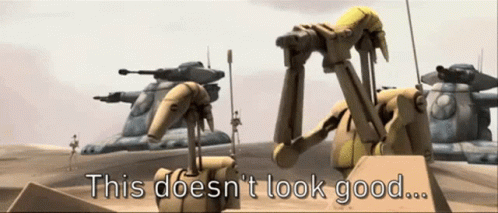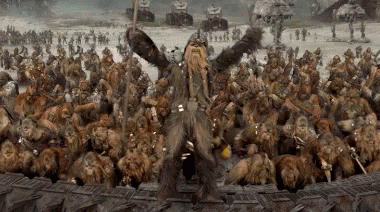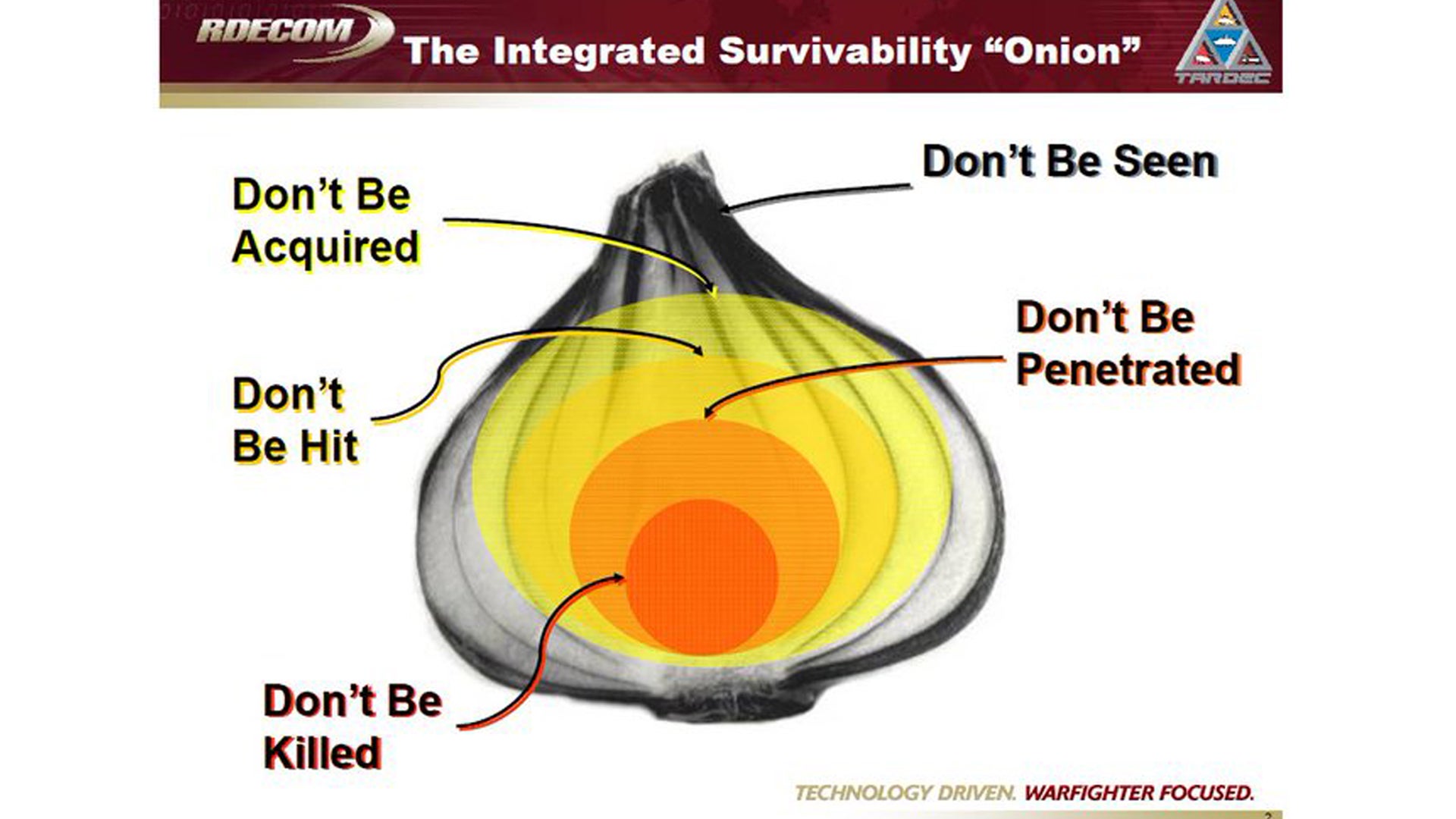Rules of Engagement - Tactics Talk pt.2

Following the first part in this series, Tempo Tempo Tempo, I have a few other general thoughts on how to stay focused and in control. Legion can be quite complicated and overwhelming at times, especially if you're on game five or six in a single weekend. There are some really simple ways to keep yourself in the game and in control, let's talk about them.

Strategy vs Tactics
This is something I probably should've harped on in the first part but here we are. At the very basic level, Strategy is your overall gameplan/goal and Tactics are what you use to achieve your goal.
This is a little bit difficult to talk specifics about because it can be so objective/table/matchup/list dependent. In general, Strategy is something that begins in the list-building step of Legion. Where you need to decide what units you want to bring, what sort of synergies you want to aim for, and what objectives you want to bring/ hope to play. Strategy does not end in list building.
OODA Loop

The OODA loop (Observe, Orient, Decide, Act) is a four-step approach to decision-making that focuses on filtering available information, putting it in context, and quickly making the most appropriate decision while also understanding that changes can be made as more data becomes available.
This loop is a really easy and efficient way to maintain focus and control. At first, it can be a little bit difficult to keep this in mind while playing, but the more you do it the easier it gets. It will almost become second nature as you use it. The real key element here is that this loop can be used very quickly. In competitive games of Legion, you have two and a half hours to do everything from setup to the end of the game. You need to use this time wisely. There are few things worse than losing a game on turn four that would've ended in a win on turn five or after.

Observe
Take in any and all relevant information. Every time you come to this step you want to look at everything you can, including stuff you may have already looked at before. You need to consider unit positions, objective positions, played command cards, and any other public information. You should also take a mental note of how well your units are fairing and how well your opponent's units are fairing. Observe how your last rotation of the OODA loop went for you and any past actions you or your opponent took.
Orient
This step is arguably the most important. Take the information you gathered and begin considering all of your options. Consider how a courage one trooper unit with two suppression may or may not get two actions, consider what actions you would take for one or for two. Consider your different command card options. Think of all of your win conditions and which one is the most likely. You need to take what you observed in the first step and begin to think of your options. This is your chance to stop and think before jumping to an unwise conclusion/decision.
Decide
This step is pretty self-explanatory. Take all of the options you considered in the orientation step and decide which single option is the best. I would advise you to stick with whatever initial decision you come to. Waffling back and forth very frequently takes a lot of wasted time and usually results in a bad choice.
Act
Take action. This is your chance to find out whether or not the decision you came to was a good one. After you act upon your decision it is now time to restart the loop.
There are plenty of articles and resources that go into more detail on the OODA loop and other similar decision trees and tables. I would highly suggest looking into them and seeing if any resonate with you.
Endurance
One of the most important aspects of competitive Legion is player and army endurance. Your lists need the endurance to last six turns of a game effectively and you need the endurance to do that five or six times, sometimes more.

Miracle jokes aside, this statement is still kinda applicable to Legion. Wolves, like humans, are endurance hunters. They need strong, enduring legs to hunt and therefore feed themselves. In Legion, you need mental endurance in order to win.
The best way to do this is to practice. If you have the time, grab your practice buddy, and try to play two games in a row. I'm certain you'll feel noticeably more tired towards the end of the second game. Being tired is the easiest way to start playing loosely and making mistakes. Apart from practicing in this kind of environment, there are other ways to assist your mental endurance. If you're going to a tournament for an entire day or two or three, eat breakfast, wear comfortable clothes, bring along some water and a snack, and if you need it, bring an energy drink or coffee. All of those things can help you, but training for endurance will help you more in this case.
Your list also needs endurance. It has to potentially survive six rounds of shooting while also trying to score and win the objective. All while maintaining control and shooting back at your opponent. Red saves or a lot of defensive tech are good ideas here, but there are also some other things to consider. Activation count, raw wounds, expected wounds, strategy, and opponent strategy all come into play here. Some are game, table, and matchup-dependent so I can't talk much about those but I can talk about these.
Activation Count - There is a sweet spot for activation count and it's usually between 8 and 14. You can go higher or lower and still be successful but it takes a lot of practice. (See Dave Grant's 6-act Vader/Palp list) If you go too low by either taking too many expensive pieces or putting too many upgrades on your units you are likely to lose harder than normal due to bad dice or making mistakes. If one of your six units has a bad defense roll and gets wiped, you're now in a really sticky situation. This could happen two or three more times and then you pretty much cannot come back from it.
Raw/Expected Wounds - This is the measurement of your list's total wound count.
Raw wounds are just the normal HP number for all of your units added up. Raw Wounds is good to have as high as you can get it. It is not based on math and therefore will not ever succumb to bad dice variance or unlucky matchups. If you have 90 Raw Wounds, your army will always take 90 wounds to fully kill. This number is usually not as high as 90, but it can be. I don't have a specific number I aim for here, but most of my lists are around the 50-70 range.
Expected wounds(EW) are slightly different. EW is a simple equation that takes into account both HP value and what saves a unit has. It is an easy way to measure roughly the average amount of hits that need to be rolled against a unit for them to be defeated. For example, a naked unit of Stormtroopers has 4 raw wounds. They have red saves, so they save, on average, 50% of the time. This means they have 8 expected wounds. The equation is X/Y where X is the HP value and Y is the failure rate of the unit's saves.
White Save Fail Rate: .83%, White Surging: .66%, Red: .50%, and Red Surging: .33%
Just another example before I move on. Take B1 Droids. They have 6 wounds and white saves. 6/.83 = 7.22 Expected Wounds.

In general, the number I like to aim for is around 90 Expected Wounds at a minimum. Any fewer than that and you run the risk of not being able to maintain a solid board presence throughout the entire length of a game. This can be achieved by bringing either a ton of bad saves or a few very good saves, but the latter can be susceptible to bad variance. For example, The new Wookiee Battlforce has a ridiculous amount of raw wounds, usually around 90, but terrible saves. Whereas something like Mass Mandos might have very few raw wounds, but amazing saves. Both of these options can come out to around the same amount of expected wounds but Wookiees are likely to still last longer due to Raw Wound count.
As with everything, this is not a hard and fast rule. You can succeed with fewer than 90 but you need to plan for it and practice. You can, of course, go higher with no real issues.
Survivability
Following the last section, this one will be a short bit about survivability. The best way to have your army survive a game of Legion is to not roll any defense dice. However, that is usually very nearly impossible to pull off while still winning the objective. The next best way is to roll as few defens dice as possible. You can do this by positioning yourself in cover, bringing non-random defensive tech like dodges or Barrier, and utilizing ways to spread damage around like Guardian. All of these reduce the amount of dice that the target has to roll, which in turn reduces the chances of you rolling blanks on defensive dice. All of which, help keep you in the game.
Let's talk onions, shall we?


The Integrated Survivability Onion is a DoD chart that simplifies and covers how to survive. It basically goes like this: Don't be seen. If you are seen, don't be acquired. If you are acquired, don't be hit. If you are hit, don't be penetrated. If you are penetrated, don't be killed.
Only bits of this Onion apply to Legion. Some of it relies heavily on real-world tactics like stealth and pre-emptive conflict resolution. These are not generally applicable to Legion.
Don't Be Seen
Step one is the one that is least useful here. In a game of Legion, you will always be "seen." Your unit's locations and objectives will never be a secret to your opponent outside of Cad Bane kinda. So, let's move on.
Don't Be Acquired
(or "Don't Be Targeted") This is where the Onion starts to help us out a little bit. The second step is to avoid being targeted by your enemy. This doesn't necessarily mean avoiding all attacks, but it means forcing your opponent to take suboptimal shots, if any. LOS blockers are a good way to avoid being targeted. Hide behind them where you cannot be shot until all units threatening that area have gone and you can safely pop out. This is not always possible, so the next best thing is target denial. You can achieve this via many different means like Reckless Diversion, moving out of your enemy's effective range, getting into cover, etc. The most common of these is utilizing cover. Now, cover does not cancel your opponent's attacks, but it does weaken them by a chunk.
Don't Be Hit
So you're getting shot at, how do you avoid hits? Dodges, Cover, Barrier, Armor, Guardian, etc. Anything that is taking hits out of the attack pool is applicable here. Cover can be used both here and in step two. The short of it is, that you should likely always bring at least some level of non-random defensive tech when you can. It doesn't have to be a lot, but going without makes you more susceptible to dice variance.
Don't Be Penetrated
This is pretty much only a Defense Dice step. After you cancel as many hits as you can via other means, you still need to roll for any remaining. Now, this is a little hard to speak on since you can't really pick and choose what defense dice a unit has access to. You can choose units with better dice, but that's not generally the main reason you're bringing most units. The really major thing here is anything that manipulates defense dice. Uncanny Luck, Danger Sense, and Delfect are all applicable. These are not necessarily in your control since they are all still random effects, but they are better than nothing. Once again though, either a unit has this or they don't. It's more of an added bonus or convenience, not a main reason to bring a unit.
Small additional note for Immune: Pierce and Impervious. Since not every die pool has pierce these are not always helpful, but when a pool does have pierce these are a perfect example for this step.
Don't Be Killed
Not being killed relies on your ability to recover from getting shot. This can be achieved via a few different means. The main and easiest one is to bring a med-bot or two. This will allow you to recover a few lost wounds after taking hits. Other options include moving out of LOS or into cover, re-upping any spent defensive tech like dodges, Inspiring away any suppression that you can, etc. Essentially prepping yourself for the next attack if there will be one.
Layers
With all of that said, none of this Onion stuff should be taken as a strict code. It's more useful as a loose set of ideas, theories, and guidelines to consider when playing. There are always exceptions to any suggestion or rule put in place by anyone, especially in the case of Legion.

My main goal has never been to set hard and fast rules for myself or anyone else. I am more interested in sharing what ideas and thoughts I have on this game to spark conversation. Conversations where I tend to learn much more than whomever I am talking to. I love gathering useful information with regard to Legion, anecdotal or otherwise. Please let me know if you have any other ideas or topics you think I should write about!
I think that is all I have for this one! Thank you for reading and I hope to hear your thoughts on what I have to say.
